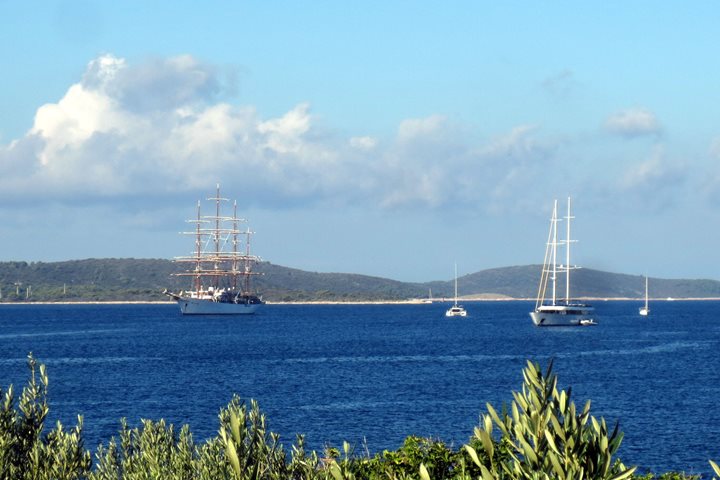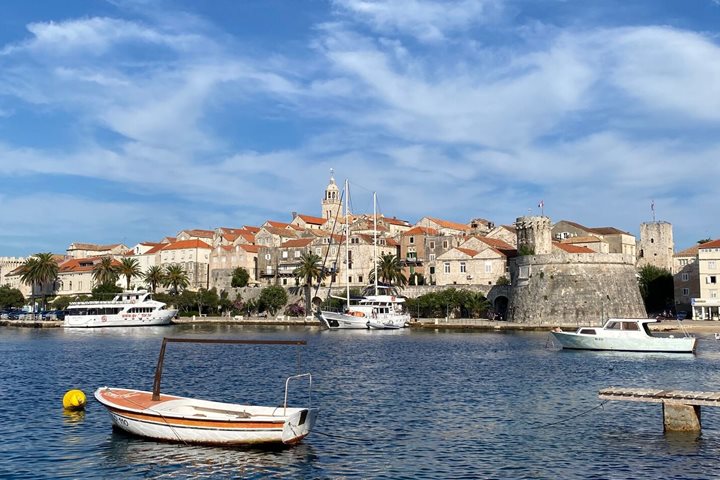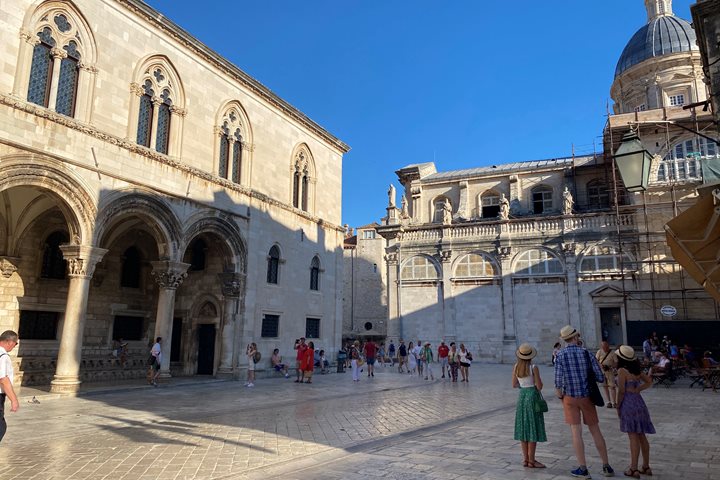After a lovely morning at sea, when we had the opportunity to embark on our “photographic safari,” as we snapped photos of the Sea Cloud under its sails. Then we arrived at the picturesque port of Katakolo on the west coast of the Peloponnese peninsula. Our buses drove us directly through a rich agricultural area to the site of ancient Olympia, a beautiful and peaceful place surrounded by hundreds of olive and pine trees.
We started exploring the site and we had a chance to see ruins of one of the most important sanctuaries of the Greek world, the Sanctuary of Zeus. We strolled through the gymnasium, the paleastra, the Sacred Way, and the workshop of Pheidias, where one of the seven wonders of the ancient world was created: the seated gold and ivory statue of Zeus. We continued towards the sacred buildings where we saw the Temple of Zeus, the Temple of Hera, and the ancient stadium at Olympia! Standing in the middle of the huge stadium (capacity: 45,000) you can’t stop yourself from flying centuries back and imagine what it meant to win the olive crown in an Olympic competition. We also saw the very spot where the Olympic flame is lit nowadays using a concave mirror that concentrates the sun’s rays. As the flame begins its journey around the world from here, everybody is reminded of the birthplace of the Olympic Games, which started as early as 776 B.C.
We continued to the archaeological museum, where we were pleasantly surprised by the number of original masterpieces preserved in the sanctuary: two complete marble pediments from the Temple of Zeus, the Nike of Paionios, and the ultimate highlight—the statue of Hermes of Praxiteles. We also saw countless pieces of bronze armor, Roman statues, and glassware.







